
Cruise Ship Review: Exploring Central America Aboard Safari Voyager
Sailing aboard Safari Voyager to Costa Rica and the Panama Canal, travellers can discover a secret world of natural wonders
Capuchin monkeys are cavorting through the trees, while an agouti shoots out of the undergrowth and trots briskly across our path, for all the world like a guinea pig with extra-long legs. A coatimundi – a kind of oversized racoon – snuffles in the bush, while spiny-tailed iguanas bask on branches.
The Curu Wildlife Refuge, on the Nicoya Peninsula, offers instant immersion into the humidity, the dense rainforest and the abundant fauna of Costa Rica. As we scramble over roots and try to dodge processions of leaf-cutter ants, I’m getting a rapid tutorial from our guide, Erika, on the concept of pura vida, Costa Rica’s most popular saying. ‘It’s literally translated as “pure life”,’ she says. ‘But it also means “hello”, “goodbye” and “everything’s fabulous” – whether you really mean that or whether you’re being sarcastic.’
There seems little need for sarcasm or cynicism in this beautiful place – a country that has no army and whose people constantly emerge from surveys as among the happiest in the world. Not that I met many of them during my 12-day expedition voyage from Puntarenas to Panama with UnCruise Adventures.
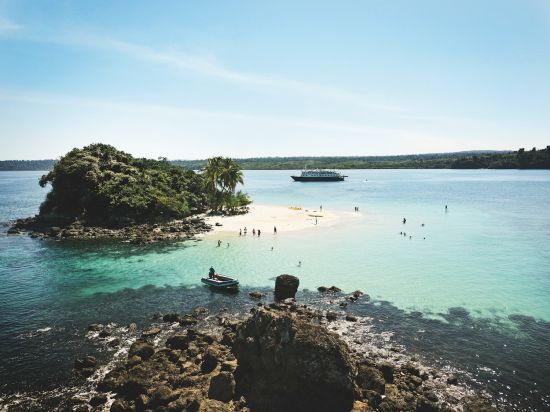
Apart from a few fellow hikers in Curu, with whom we exchanged pura vidas, we barely saw another human for the whole of the first week. Instead, our group of 50 – from North America, Australia, New Zealand and the UK – spent time kayaking round exquisite mangrove-fringed bays and hiking through pristine rainforest, with howler monkeys hooting in the trees and scarlet macaws swooping overhead.
Each location seemed more ridiculously beautiful than the last – and then, after three days in Costa Rica, the venerable Safari Voyager slipped across the border into Panamanian waters, dropping anchor off Granito de Oro – literally ‘grain of gold’ – a speck of pale sand, tufted with three coconut palms and surrounded by reef. Turtles popped their heads out of the aquamarine sea, as if inviting us to jump in.
I love snorkelling, but on the first day I had made the unfortunate mistake of diving off the ship into a swarm of jellyfish. Several doses of antihistamine later, I was back in the water, this time clad in a rash vest, borrowed wetsuit leggings and even socks inside my fins, marvelling at brilliant orange and electric-blue fish, waving coral and a large moray eel going about its business.
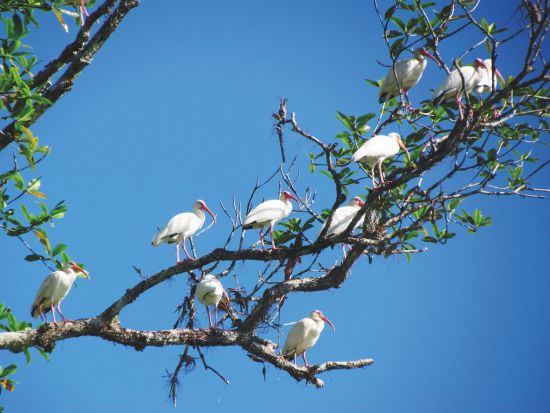
Coiba island – at 194 square miles the largest in Central America – is one big national park, smothered in dense rainforest and circled by a necklace of white beaches. But there’s an air of melancholy here. From 1919 until 2004, Coiba was a high-security penal colony, housing 3,000 prisoners in horrific conditions. Hundreds ‘disappeared’, and locals believe the island is haunted. The ranger station is tended by four former inmates who live in converted cell blocks.
In the absence of other humans, they’ve formed an unlikely friendship with an elderly crocodile – called Tito – who emerges Safari Voyager’s guests enjoy free yoga sessions from the mangroves for food scraps when the rangers bang a hollow stick. During our visit, he skulked in the mud at the edge of his lagoon, posing obligingly for photos.
Later we hiked up the Gambute Trail, a steep and sweaty scramble, rewarded at the top by uninterrupted views over the forest canopy toward distant islands – places to which the prisoners once dreamed of escaping.
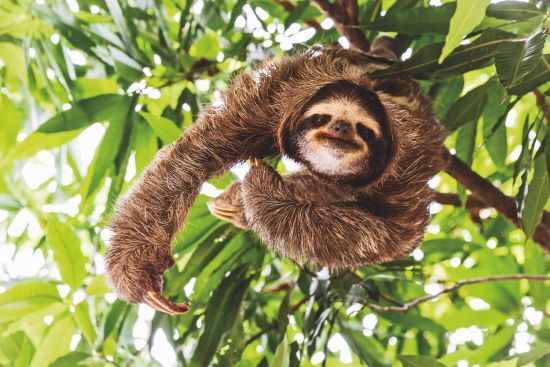
Then, after a week in the wild with just ourselves for company – it was time to meet some locals. Just after dawn we piled into a fleet of wooden dugouts and chugged up the muddy Mogue river, our wake creating gentle ripples among the spindly roots of the mangroves.
In the distance, I could see the misty hills of the Darien Gap, the roadless and lawless border between Panama and Colombia, regarded as one of the most hostile regions in the world. The Darien is home to the Embera, one of Panama’s seven indigenous tribes, who fish in the rivers, raise pigs and chickens and live off the land in the inhospitable rainforest. In the dry season, November to April, they receive visitors and make an income from selling exquisitely woven palm-fibre baskets and beaded jewellery.
The Embera were kitted out in their finery as they greeted us with drumming and dancing – silk sarongs and beaded bikini tops for the women; loincloths for the men. They don’t wear shoes and they paint their bodies in geometric designs with the black juice of the jagua fruit.
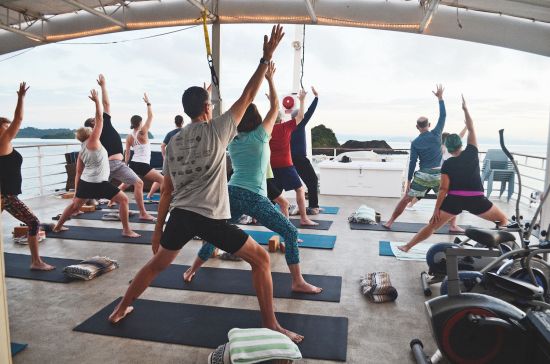
They offered us temporary tattoos (mine covered my jellyfish sting and, pleasingly, lasted a good ten days). A roaring trade was done in baskets, and for good reason – what sells for $60 in the rainforest would cost at least ten times that in the posh galleries of Panama City.
Safari Voyager is a creaky old ship but, compared to the wooden stilt villages of the Embera, life on board was positively luxurious. Our daily routine was dictated by the light, so we’d be up for pale pink sunrises, out hiking, paddle-boarding or kayaking most of the day, rewarding our efforts with cold beers and powerful G&Ts in the bar before dinner and asleep by 9pm.
The food was delicious, with plenty of local salads and fresh fish, and the service provided by the five guides was top- notch. Informality was the rule, the upper deck quickly turning into an outdoor laundry with soggy walking boots, wetsuits, rash vests and yes, occasionally, underwear strung up on makeshift washing lines. In the humidity, though, nothing dried.
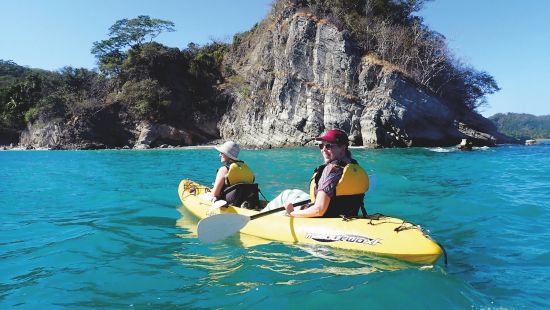
Our itinerary included a transit of the Panama Canal, and as we approached it we could see the skyscrapers of Panama City, looming in the distance but seeming to belong to another planet. After waiting our turn, surrounded by hundreds of massive container ships, there was a party atmosphere on deck as we slid under the Bridge of the Americas at sunset, cheering as we squeezed into the Miraflores locks.
The 40-mile length of this famous waterway spans two worlds. Caribbean Panama feels quite unlike the Pacific coast – the people, the scenery, even the waters seem different (and thankfully free of jellyfish). We wandered round the ramshackle village of Portobelo, which has an intriguing history, despite now being almost catatonically sleepy.
Once a vital stop on the trade routes for gold, silver and pearls, Portobelo is guarded by no fewer than three crumbling 17th-century forts. This is the spot where, in 1596, Sir Francis Drake died of dysentery, and was buried at sea in a lead-lined coffin.
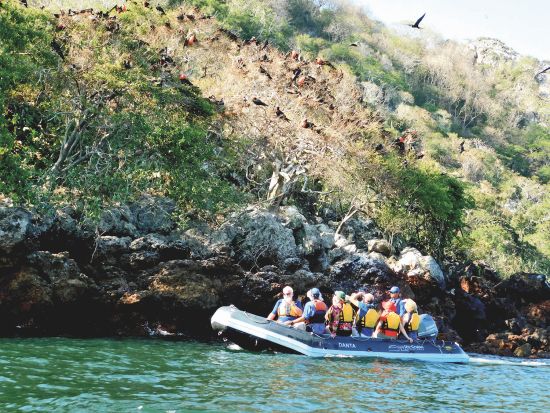
Our own voyage ended with two days in the dreamy Guna Yala archipelago, formerly known as the San Blas islands. Here, the local Guna tribe grow coconuts on 365 tiny islets and catch lobster to sell to passing yachts. Like the Embera, they’re famed for their handicrafts (in this case, intricate mola, embroidered panels that the women wear on their blouses, and which sell for up to US$50 apiece).
Here I snorkelled for hours over vast underwater landscapes of coral, stingrays shimmying gracefully along the sandy ocean floor. Back on the beach, the only sound was the lapping of waves and the occasional thud of a falling coconut. Pura vida indeed.
Best of Safari Voyager
Best meal: Dinner on deck as we sailed into the Panama Canal at sunset: grilled sea bass, barbecued chicken, home-made corn bread, salads and chilled rosé.
Best excursion: Visiting the indigenous Embera tribe, deep in the Darien rainforest.
Best onboard experience: Fascinating lectures every night from the team of five excellent local guides – and a friendly and interesting group of fellow passengers.
Best to buy: Hand-woven baskets from the Embera, and mola – embroidered panels that can be made into cushion covers, bags, clothing or framed pictures – from the Guna tribe in Panama.
Get on Board
12-night Pure Panama & Costa Rica expedition from Panama City to San Jose (Costa Rica) via Guna Yala islands, Panama Canal, Darien jungle, Coiba, Granito de Oro and Curu Wildlife Reserve, departing 8 April 2020, from £5,916, book in the UK at windowsontheworld.com
10-night Canal, Culture & Adventure voyage. Itinerary as above but omitting Guna Yala, departing 20 November 2019, from £6,465 including international flights, uncruise.com